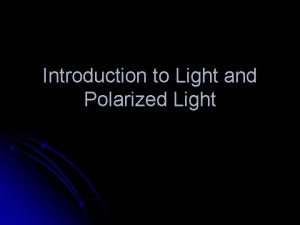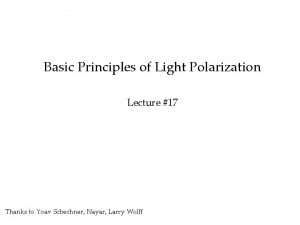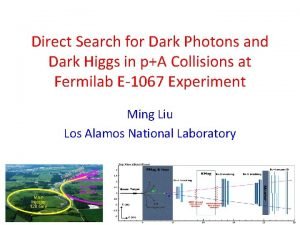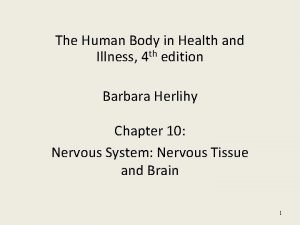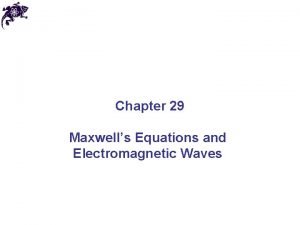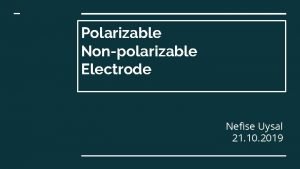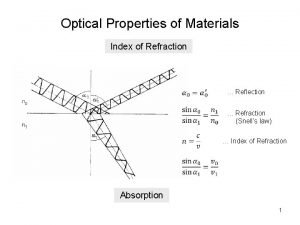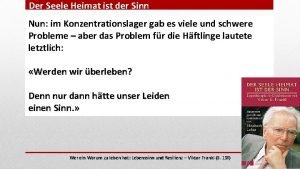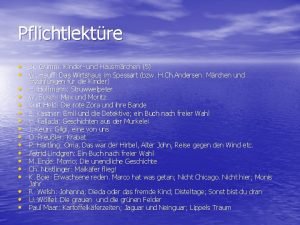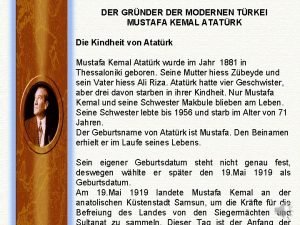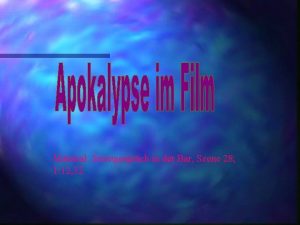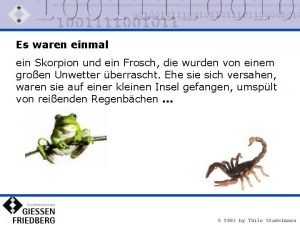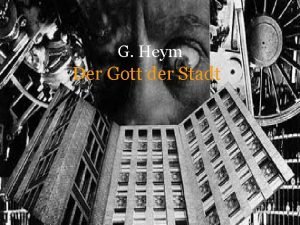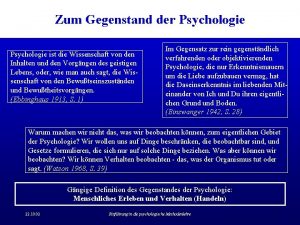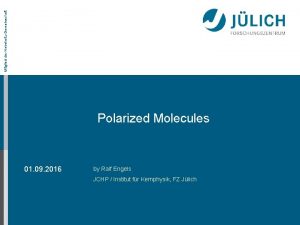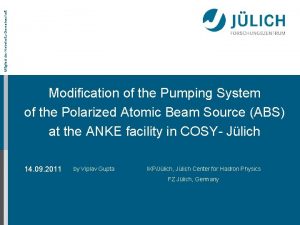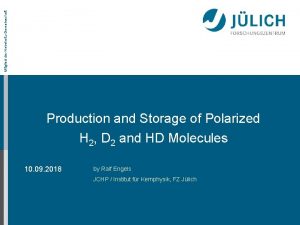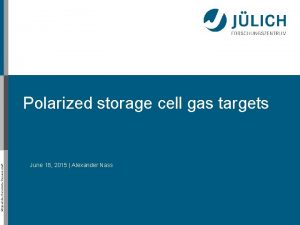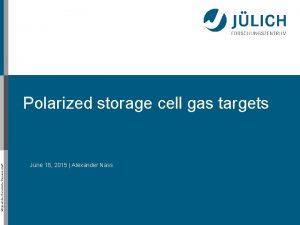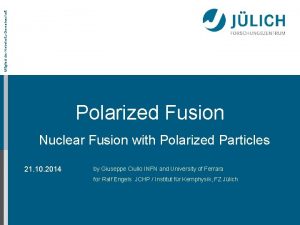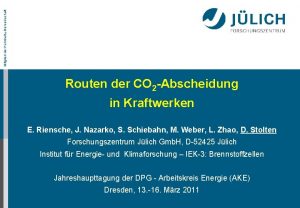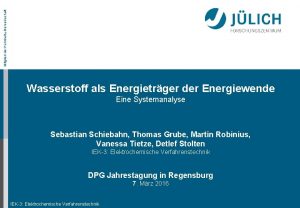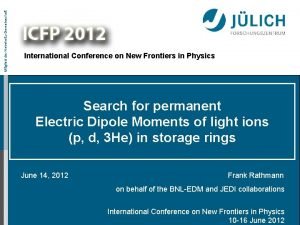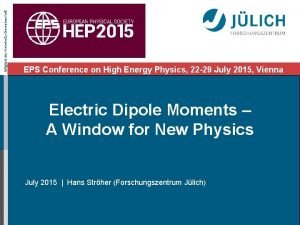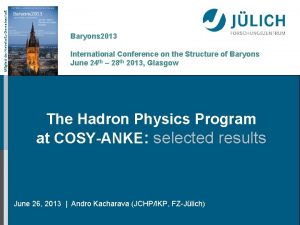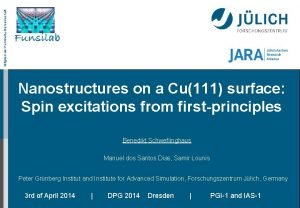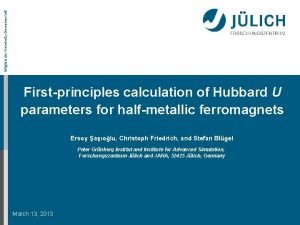Mitglied der HelmholtzGemeinschaft on the LEAP conference Polarized





















- Slides: 21

Mitglied der Helmholtz-Gemeinschaft on the LEAP conference Polarized Fusion Nuclear Fusion with Polarized Particles 08. 07. 2014 by Ralf Engels JCHP / Institut für Kernphysik, FZ Jülich

Polarized Fusion Can the total cross section of the fusion reactions be increased by using polarized particles ? Total cross section 2

Polarized Fusion Can the trajectories of the ejectiles be controlled by use of polarized particles ? Total cross section Differential cross section 3

Polarized Fusion Can the total cross section of the fusion reactions be increased by using polarized particles ? t+d 4 He +n Factor: ~1. 5 at 107 ke. V J = 3/2 + / s-wave dominated (~96%) 3 He +d 4 He +p Factor: ~1. 5 at 430 ke. V [Ch. Leemann et al. , Helv. Phys. Acta 44, 141 (1971)] H. Paetz gen. Schieck, Eur. Phys. J. A 44, 321 -354 (2010) 4

Polarized Fusion What is the advantage for fusion reactors ? 1. ) Inertial Fusion (Laser induced fusion) (Berkeley, Orsay, Darmstadt, …) Laser Pellet target (DT pellets) 6

Polarized Fusion What is the advantage for fusion reactors ? Calculation by M. Temporal et al. for the „Megajoule“ Project M. Temporal et al. ; Ignition conditions for inertial confinement fusion targets with polarized DT fuel; Nucl. Fusion 52 (2012) 103011 7

Polarized Fusion What is the advantage for fusion reactors ? Calculation by M. Temporal et al. for the „Megajoule“ Project No optimization of the laser power: Gain increased by factor 4 with use of polarized fuel 8

Polarized Fusion What is the advantage for fusion reactors ? 2. ) Magnetic Confinement (Tokomak): Collaboration between Jlab (A. Sandorfi et al. ), University of Virgina, Oak Ridge Lab. and the DIII-Tokomak in San Diego Idea: Feed DIII tokomak with polarized 3 He and D produced with the methods of frozen spin targets like at Jlab. 9

Polarized Fusion Which questions must be solved ? 1. ) Dependence of the total cross section from the polarization for all fusion reactions. d + d t+p 3 He +n Can cross sections be increased ? Can neutrons be suppressed ? Can the trajectories of the neutrons be controlled? Reaction is not s-wave dominated ! 10

Polarized Fusion Spins of both deuterons are aligned: Only pz(qz) and pzz(qzz) ≠ 0 Only beam is polarized: (pi, j ≠ 0, qi, j = 0) σ(ϴ, Φ) = σ0(ϴ) · {1 + 3/2 Ay(ϴ) py + 1/2 Axz(ϴ) pxz + 1/6 Axx-yy(ϴ) pxx-zz + 2/3 Azz(ϴ) pzz } 11

Polarized Fusion Deltuva and Fonseca, Phys. Rev. C 81 (2010) 12

The Experimental Setup at PNPI the ABS from Ferrara: SAPIS project: 16 a/s (after upgrade) ~ 6 ∙ 10 ~ 4 ∙ 1016 a/s 2 ∙ 1011 a/cm 2 →~3 POLIS (KVI, Groningen) Ion beam: I ≤ 20 μA Detector Setup: 4π covered by - large pos. sens. Detectors - (~ 500 single PIN diodes ? ) dd-fusion polarimeter → 1. 5 ∙ 1014 d/s ( Ebeam ≤ 32 ke. V ) LSP from POLIS 25 25 2 s 4. 5 ∙ 10 /cm Luminosity: 3 ∙ 10 /cm 60 /h → count rate: ~ 40 LSP from the SAPIS project 1 month of beam time → 2 13

POLIS @ PNPI 14

Polarized Fusion Which questions must be solved ? 1. ) Dependence of the total cross section from the polarization for all fusion reactions. 2. ) Polarization conservation in the different plasmas ? a. ) Magnetic confinement: - R. M. Kulsrud et al. ; Phys. Rev. Lett. 49, 1248 (1982) - Experiment by Sandorfi et al. b. ) Inertial Fusion: - J. P. Didelez and C. Deutsch; 2011 Laser and Particle Beams 29 169. - M. Büscher (FZJ / Uni. Düsseldorf) „Laser Acceleration“ 17

Laser Acceleration Proton rich dot 20 x 0. 5 μm ~ 100 GV/m 108 protons at 1. 5 Me. V ~ 100 GV/m 1011 protons up to 10 Me. V Laser Acceleration of pol. 3 He 2+ ions from pol. 3 He gas targets JUSPARC Project in FZJ 18

Polarized Fusion Which questions must be solved ? 1. ) Dependence of the total cross section from the polarization for all fusion reactions. 2. ) Polarization conservation in the different plasmas ? 3. ) How to produce polarized fuel ? - inertial fusion: - HD targets are available (10 m. K, ~15 T) (relatively small polarization ~ 40%) - frozen spin DT targets possible - magnetic confinement: a. ) pol. 3 He is available („Laser-pumping“) b. ) pol. T will be possible with a similar method c. ) pol. D ? ? ? 19

PIT @ ANKE/COSY Main parts of a PIT: • Atomic Beam Source • Target gas hydrogen or deuterium • H/D beam intensity (2 hyperfine states) 8. 2. 1016 / 6. 1016 atoms/s • Beam size at the interaction point σ = 2. 85 ± 0. 42 mm • Polarization for hydrogen/deuterium PZ = 0. 89 ± 0. 01 PZ = -0. 96 ± 0. 01 Pz = + 0. 88 ± 0. 01 / - 0. 91 ± 0. 01 Pzz = - 1. 71 ± 0. 03 / + 0. 90 ± 0. 01 • Lamb-Shift Polarimeter • Storage Cell 20

Polarized H 2/D 2 Molecules Measurements from NIKHEF, IUCF, HERMES show that recombined molecules retain fraction of initial nuclear polarization of atoms! Naïve model polarized Pm = 0. 5 unpolarized Nuclear Polarization of Hydrogen Molecules from Recombination of Polarized Atoms Is there a way to increase Pm (surface material, T, B etc)? T. Wise et al. , Phys. Rev. Lett. 87, 042701 (2001). 21

The Setup ISTC Project # 1861 PNPI, FZJ, Uni. Cologne DFG Project: 436 RUS 113/977/0 -1 22

Polarized H 2 Molecules Measurements on Fomblin Oil (Perfluorpolyether PFPE) HFS 3 TCell = 100 K Protons: Pm = - 0. 81 ± 0. 02 n = 174 ± 19 c = 0. 993 ± 0. 005 + H 2 - Ions: Pm = - 0. 84 ± 0. 02 n = 277 ± 31 23

Polarized Fusion Which questions must be solved ? 1. ) Dependence of the total cross section from the polarization for all fusion reactions. 2. ) Polarization conservation in the different plasmas ? 3. ) How to produce polarized fuel ? - inertial fusion: - frozen spin DT targets possible (relatively small polarization ~ 40%) - HD targets are available - magnetic confinement: a. ) pol. 3 He is available („Laser-pumping“) b. ) pol. T will be possible with a similar method c. ) pol. D ? ? ? => new ideas are wellcome !!!! 24
 Polarized light definition
Polarized light definition Birefrengence
Birefrengence Polarized pluralist model
Polarized pluralist model Dark sector upgrades
Dark sector upgrades Brain homunculus
Brain homunculus A polarizer blocks 75% of a polarized light beam.
A polarizer blocks 75% of a polarized light beam. Ideal polarized electrode
Ideal polarized electrode Index of refraction formula
Index of refraction formula Der seele heimat ist der sinn
Der seele heimat ist der sinn Der daumen pflückt die pflaumen
Der daumen pflückt die pflaumen Gründer der modernen türkei
Gründer der modernen türkei Weg der atemluft
Weg der atemluft Beschriftung einer burg
Beschriftung einer burg Weltuntergangstheorie
Weltuntergangstheorie Skorpion und der frosch
Skorpion und der frosch Erste tag der woche
Erste tag der woche Heym gott der stadt
Heym gott der stadt Gegenstand der arbeitspsychologie
Gegenstand der arbeitspsychologie Sorrowing old man painting
Sorrowing old man painting Bàn tay mà dây bẩn
Bàn tay mà dây bẩn Cách giải mật thư tọa độ
Cách giải mật thư tọa độ Các châu lục và đại dương trên thế giới
Các châu lục và đại dương trên thế giới
